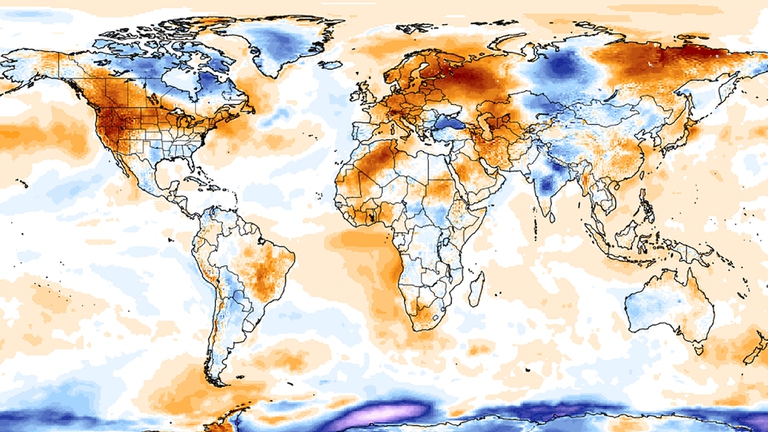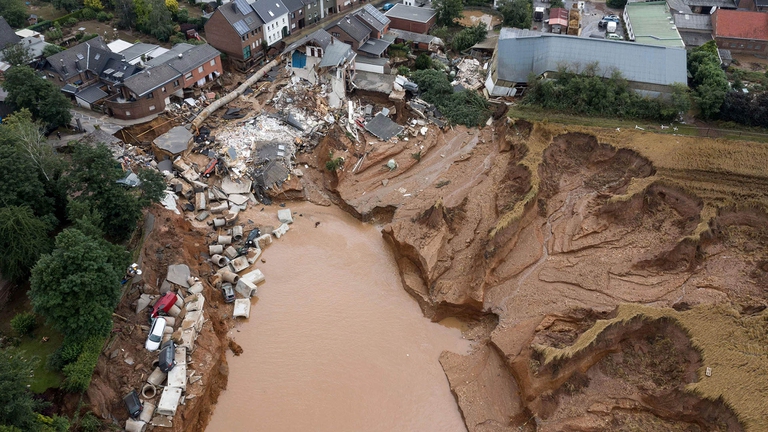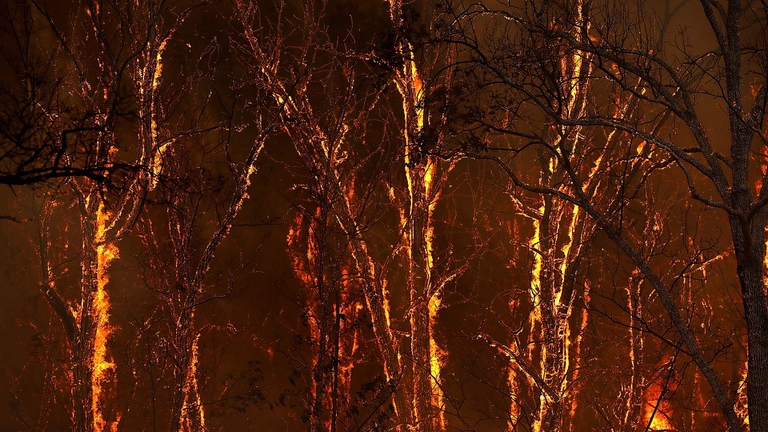
Nearly 100 people have died in the heatwave in India that has badly hit millions of people who work under the blazing sun to earn their livelihood.
According to data reported by C3S, 2021 was one of the hottest years on record and Europe experienced a summer of extremes.
On January 10th, 2022, the European Union’s Copernicus Climate Change Service (C3S) released its annual findings, revealing that the last seven years have been the warmest on record by far. What’s more, in 2021, atmospheric greenhouse gas concentrations continued to increase, congruent with the trend of steadily rising carbon dioxide concentrations. In fact, according to preliminary analyses of satellite measurements, carbon dioxide (CO2) levels reached an annual global column-averaged record (XCO2) of about 414 ppm, while methane (CH4) reached an annual record of about 1876 ppb.
According to the analysed data, the year 2021 was the fifth warmest year on record globally. Overall, it was marginally warmer than 2015 and 2018, with annual average temperatures 1.1-1.2°C above pre-industrial levels (1850-1900) and 0.3°C above the temperatures of the 1991-2020 reference period.
Throughout Europe, during late winter and the spring of 2021, surface air temperatures were generally close to or below the 1991-2020 average. In Europe, all ten warmest recorded years have occurred since 2000. During 2021, Europe experienced a summer characterized by weather extremes as the continent was hit by severe heatwaves, resulting in the European summer of 2021 being the warmest on record, albeit close to the previous warmest summers of 2010 and 2018.
The summer of 2021 also saw a new European record for the highest temperature; a high of 48.8°C was reported in Sicily, Italy. This temperature tops the previous record high by 0.8°C, though the World Meteorological Organization (WMO) hasn’t yet officially confirmed this temperature as the new record.
This record high came amid a series of several heatwaves that hit the Mediterranean region during July and part of August, with high temperatures affecting Greece, Spain, and Italy. At the same time, in July 2021, extremely heavy rainfall in western-central Europe, a region with soil close to saturation, caused severe flooding in multiple nations including Germany, Belgium, Luxembourg, and the Netherlands.
In 2021, the highest amount of carbon emissions was registered in North America, totalling 83 megatonnes, with other pyrogenic emissions from wildfires higher than in any summer since CAMS started recording its data in 2003. The reduction of the air quality and the increase of pollution in the area was the result of the extreme wildfires that affected the region throughout July and August, such as the “Dixie Fire”, the second-largest recorded fire in California’s history, which were worsened by the hot and dry conditions typical of the region. In addition, the continent experienced the warmest June on record amid an unprecedented heatwave that broke maximum temperature records by several degrees.
This kind of data allows us to measure the extent of the consequences of climate change. But rather than falling into “climate doomism”, we can channel the emotional impact that such a notion can trigger into action and community care.
Siamo anche su WhatsApp. Segui il canale ufficiale LifeGate per restare aggiornata, aggiornato sulle ultime notizie e sulle nostre attività.
![]()
Quest'opera è distribuita con Licenza Creative Commons Attribuzione - Non commerciale - Non opere derivate 4.0 Internazionale.
Nearly 100 people have died in the heatwave in India that has badly hit millions of people who work under the blazing sun to earn their livelihood.
COP26 ended on Saturday 13th November, one day later than expected. Some positives and many negatives in the Glasgow Climate Pact, weakened by India’s last-minute change.
Governments made announcements, leaders spoke, decisions were made, civil society protested. This is what happened during the first week of COP26.
Reducing emissions means protecting our health: if unmitigated, climate change will pose increasingly severe challenges to human well-being.
The Paris Climate Agreement requires us to move towards carbon neutrality, but what does reducing net greenhouse gas emissions to zero actually mean?
If we want to limit the rise of average global temperatures to 1.5 degrees, we can emit only a limited amount of CO2. This is the carbon budget.
We talk to Shaama Sandooyea, activist and marine biologist from Mauritius onboard Greenpeace’s Arctic Sunrise ship in the heart of the Indian Ocean.
In the heart of Switzerland lies the largest glacier in the Alps, the Greater Aletsch Glacier. However, climate change is threatening its very existence.
We must take advantage of opportunities for change to stop the climate crisis from becoming so serious that it drives us towards collective erasure.










